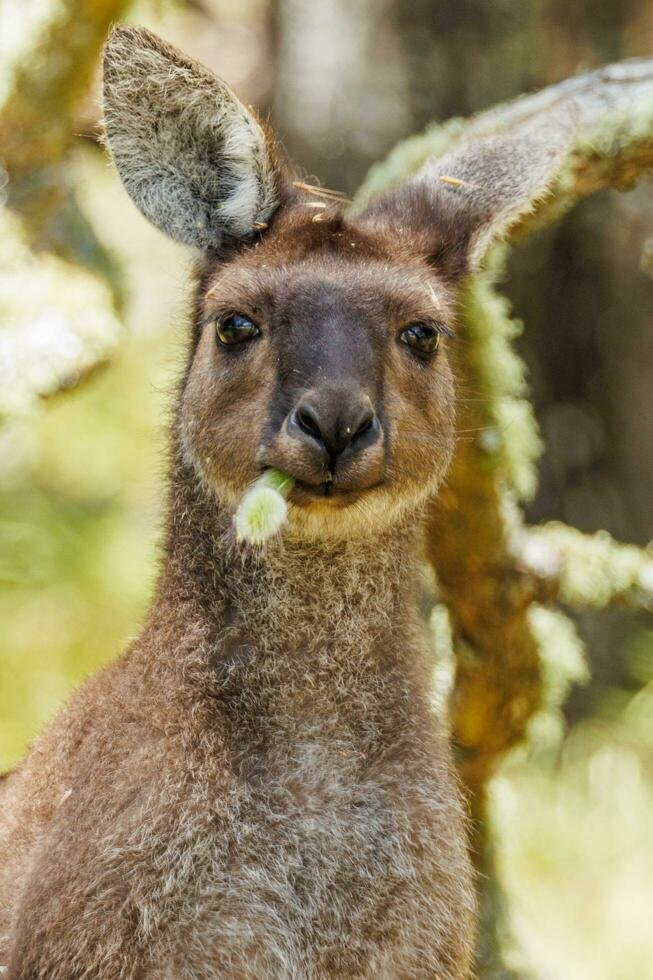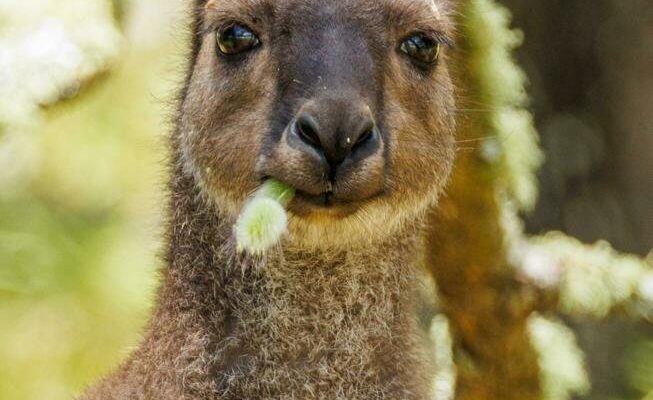
Let’s dive into how this beautiful kangaroo isn’t just a cute animal that bounces around; it’s a creature with a rich tapestry of cultural significance. Whether you’re sipping coffee at a café or lounging at home, this exploration will give you fresh insights into how the Western Grey Kangaroo has shaped stories, art, and identity in Australia.
Aboriginal Mythology and the Western Grey Kangaroo
Aboriginal cultures have a profound connection to the land and its wildlife, and the Western Grey Kangaroo is no exception. In many Indigenous stories, kangaroos embody resilience, strength, and the nurturing spirit of the earth. For instance, some tales portray the kangaroo as a clever and resourceful being that teaches humans vital survival skills.
These stories are more than mere entertainment; they are foundational to the cultural identity of Aboriginal people. Through oral traditions, they pass down lessons of respect for nature, cooperation, and community through the embodiment of the kangaroo. You might even say that every time a child hears these stories, they’re hopping along in the paws of their ancestors.
The Kangaroo as a Cultural Symbol
In broader Indigenous Australian culture, the kangaroo symbolizes not just survival but also a deep connection to community and family. During ceremonies, symbolic kangaroo dances and songs might be performed, celebrating their significance. These events often draw on the kangaroo’s characteristics and behaviors, mirroring aspects of social bonding and resourcefulness in human communities.
Here’s the thing: the kangaroo is often depicted in art and storytelling, acting as a bridge between human experience and the natural world. When you see a kangaroo represented in this way, it’s like seeing a reflection of human values and relationships.
The Western Grey Kangaroo in Modern Australian Culture
Fast forward to today, and the Western Grey Kangaroo continues to thrive as an emblem of Australian culture. It appears in everything from national logos to sports teams. In fact, the Australian national rugby team is affectionately known as the “Wallabies,” which are actually a type of kangaroo. This playful nickname captures the spirit of Australia and celebrates the Western Grey as a national treasure.
Moreover, the kangaroo has become a friendly ambassador for Australia. Tourists flock to see these creatures, getting a firsthand experience of their unique charm. Honestly, who doesn’t smile seeing a kangaroo bounce across the landscape? It embodies that laid-back, friendly vibe Australians are known for.
Kangaroo Mascots and Media Representations
The influence of the Western Grey Kangaroo extends into media and advertising, where it often represents themes of adventure, freedom, and the great outdoors. You might recall commercials featuring animated kangaroos, offering humor and relatability.
In animated films and children’s books, kangaroos are often characterized as fun-loving and adventurous. They become more than animals; they take on human traits that resonate with audiences. Through these depictions, the Western Grey Kangaroo continues to capture the imagination of people, reinforcing its status as a beloved figure in Australian culture.
Kangaroo Symbolism in Art
Art has a special place in representing the Western Grey Kangaroo, especially with Australian artists who draw inspiration from the natural world. You’ll find this kangaroo featured in paintings, sculptures, and textiles, often rendered in vibrant colors that reflect the Australian landscape.
Artists like Emily Kame Kngwarreye and Albert Namatjira incorporate kangaroo imagery symbolically, emphasizing not just aesthetics but also storytelling. Through their work, they often convey deeper meanings, such as connection to land and identity.
Capitalizing on the Kangaroo’s Appeal
The Western Grey Kangaroo’s appeal isn’t limited to Indigenous or national themes; it’s also a popular subject among modern commercial artists. Merchandise featuring kangaroos, from T-shirts to souvenirs, often finds its way into tourist markets, capitalizing on the animal’s charm.
This commercial use can sometimes feel a bit out of touch, but it serves a purpose. It spreads awareness about the species and, by extension, the importance of conservation efforts in Australia. By promoting the kangaroo, these artists and businesses help remind us of the beauty and fragility of the environment.
Folklore and Fables Featuring Kangaroos
Kangaroos also find their way into modern fables and folklore, teaching important moral lessons. For instance, some stories depict kangaroos as guardians of the Australian bush, outsmarting creatures that threaten their home. These tales often highlight themes of bravery, cleverness, and the importance of standing up for one’s community.
You might be wondering how these stories differ from traditional Aboriginal tales. While Indigenous stories are steeped in the spiritual and cultural connection to the land, modern fables often take a more whimsical approach. They serve as a reminder that storytelling is ever-evolving, and today’s tales continue to build upon the legacy of those that came before.
Common Themes in Kangaroo Folktales
Across these folk stories, you’ll often encounter recurring themes: loyalty, family, and the balance of nature. Kangaroos are portrayed as loyal companions, often working together to protect their family or environment.
For instance, you might come across a story where a kangaroo saves its young from a predator, showcasing both bravery and intelligence. These narratives serve to teach children important values while reinforcing the kangaroo’s status as a hero in their eyes.
The Western Grey Kangaroo in Conservation Efforts
As cultural representations of the Western Grey Kangaroo grow, so do efforts to protect them. In Australia, conservationists work tirelessly to ensure that this unique species remains part of the landscape. The kangaroo not only symbolizes the country; it is also a key player in the health of its ecosystem.
By highlighting the cultural significance of the Western Grey Kangaroo, conservation campaigns often engage wider audiences. They target not just animal lovers but also anyone who appreciates the rich tapestry of stories and identities that the kangaroo represents.
Community Involvement in Conservation
Community involvement plays a major role in kangaroo conservation. Local groups often organize events like kangaroo spotting tours or educational workshops to raise awareness. These activities not only foster a sense of community but also encourage a deeper understanding of the importance of protecting these magnificent creatures.
When communities come together to support kangaroo conservation, they’re not just preserving wildlife; they’re nurturing a part of their cultural identity. As people learn to appreciate the kangaroo, they also connect with the broader ecological narrative of the land.
The Western Grey Kangaroo is much more than just a hopping creature in the Australian outback; it is a cultural icon with deep roots in folklore, art, and community identity. From ancient Aboriginal stories that impart wisdom to modern representations in media and art, this kangaroo connects people to their heritage and the natural world.
Whether you admire it for its grace, strength, and beauty or appreciate its role as a symbol of Australian culture, the Western Grey Kangaroo will continue to inspire stories, art, and conservation for generations to come. In every bounce and leap, you can see a reflection of resilience, community, and the enduring bond between humans and nature. So next time you spot a kangaroo, think about the rich tapestry of stories and meanings it carries—each hop is a part of a much larger story.

